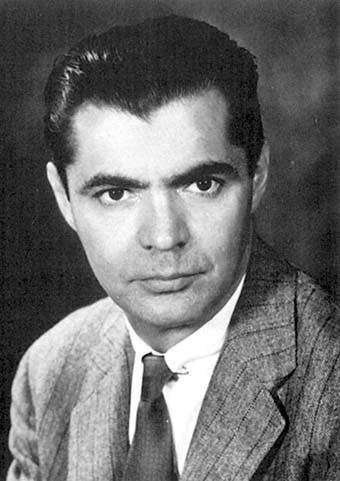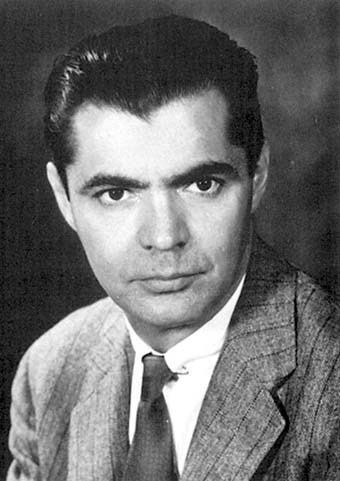Name George Palade | Notable students Gunter Blobel Fields Cell biology | |
 | ||
Institutions Rockefeller UniversityYale UniversityUniversity of California, San Diego Education Carol Davila University of Medicine and Pharmacy Known for Ribosome, Endoplasmic reticulum Similar People | ||
G ndit in romania george emil palade
George Emil Palade ([ˈd͡ʒe̯ord͡ʒe eˈmil paˈlade]; November 19, 1912 – October 8, 2008) was a Romanian-American cell biologist. Described as "the most influential cell biologist ever", in 1974 he was awarded the Nobel Prize in Physiology and Medicine along with Albert Claude and Christian de Duve. The prize was granted for his innovations in electron microscopy and cell fractionation which together laid the foundations of modern molecular cell biology, the most notable discovery being the ribosomes of the endoplasmic reticulum – which he first described in 1955.
Contents
- G ndit in romania george emil palade
- Imnul george emil palade
- Education and early life
- Career and research
- Palades coworkers and approach in the 1960s
- Personal life
- References

Palade also received the U.S. National Medal of Science in Biological Sciences for "pioneering discoveries of a host of fundamental, highly organized structures in living cells" in 1986, and was previously elected a Member of the US National Academy of Science in 1961. He was also elected a Foreign Member of the Royal Society (ForMemRS) in 1984.

Imnul george emil palade
Education and early life

George Emil Palade was born on November 19, 1912 in Iași, Romania; his father was a professor of philosophy at the University of Iași and his mother was a high school teacher. George E. Palade received his M.D. in 1940 from the Carol Davila School of Medicine in Bucharest.
Career and research

Palade was a member of the faculty at Carol Davila University until 1946, when he went to the United States to do postdoctoral research. There, he joined Prof. Albert Claude at the Rockefeller Institute for Medical Research.

In 1952, Palade became a naturalized citizen of the United States. He worked at the Rockefeller Institute (1958–1973), and was a professor at Yale University Medical School (1973–1990), and University of California, San Diego (1990–2008). At UCSD, Palade was Professor of Medicine in Residence (Emeritus) in the Department of Cellular & Molecular Medicine, as well as a Dean for Scientific Affairs (Emeritus), in the School of Medicine at La Jolla, California.
In 1970, he was awarded the Louisa Gross Horwitz Prize from Columbia University together with Renato Dulbecco winner of 1975 Nobel Prize in Physiology or Medicine "for discoveries concerning the functional organization of the cell that were seminal events in the development of modern cell biology", related to his previous research carried out at the Rockefeller Institute for Medical Research. His Nobel lecture, delivered on December 12, 1974, was entitled: "Intracellular Aspects of the Process of Protein Secretion", published in 1992 by the Nobel Prize Foundation, He was elected an Honorary member of the Romanian Academy in 1975. In 1981, Palade became a founding member of the World Cultural Council. In 1988 he was also elected an Honorary Member of the American-Romanian Academy of Arts and Sciences (ARA).
Palade was the first Chairman of the Department of Cell Biology at Yale University. Presently, the Chair of Cell Biology at Yale is named the "George Palade Professorship".
At the Rockefeller Institute for Medical Research, Palade used electron microscopy to study the internal organization of such cell structures as ribosomes, mitochondria, chloroplasts, the Golgi apparatus, and others. His most important discovery was made while using an experimental strategy known as a pulse-chase analysis. In the experiment Palade and his colleagues were able to confirm an existing hypothesis that a secretory pathway exists and that the Rough ER and the Golgi apparatus function together.
He focused on Weibel-Palade bodies (a storage organelle unique to the endothelium, containing von Willebrand factor and various proteins) which he described together with the Swiss anatomist Ewald R. Weibel.
Palade's coworkers and approach in the 1960s
The following is a concise excerpt from Palade's Autobiography appearing in the Nobel Award documents
"In the 1960s, I continued the work on the secretory process using in parallel or in succession two different approaches. The first relied exclusively on cell fractionation, and was developed in collaboration with Philip Siekevitz, Lewis Joel Greene, Colvin Redman, David Sabatini and Yutaka Tashiro; it led to the characterization of the zymogen granules and to the discovery of the segregation of secretory products in the cisternal space of the endoplasmic reticulum. The second approach relied primarily on radioautography, and involved experiments on intact animals or pancreatic slices which were carried out in collaboration with Lucien Caro and especially James Jamieson. This series of investigations produced a good part of our current ideas on the synthesis and intracellular processing of proteins for export. A critical review of this line of research is presented in the Nobel Lecture.".
One notes also that the Nobel Prize in Chemistry was awarded in 2009 to Drs. Venkatraman Ramakrishnan, Thomas A. Steitz and Ada E. Yonath "for studies of the structure and function of the ribosome", discovered by Dr. George Emil Palade.
Personal life
Palade is survived by his wife Marilyn Farquhar, a cell biologist at the University of California, San Diego, and a daughter and son from his first marriage.
